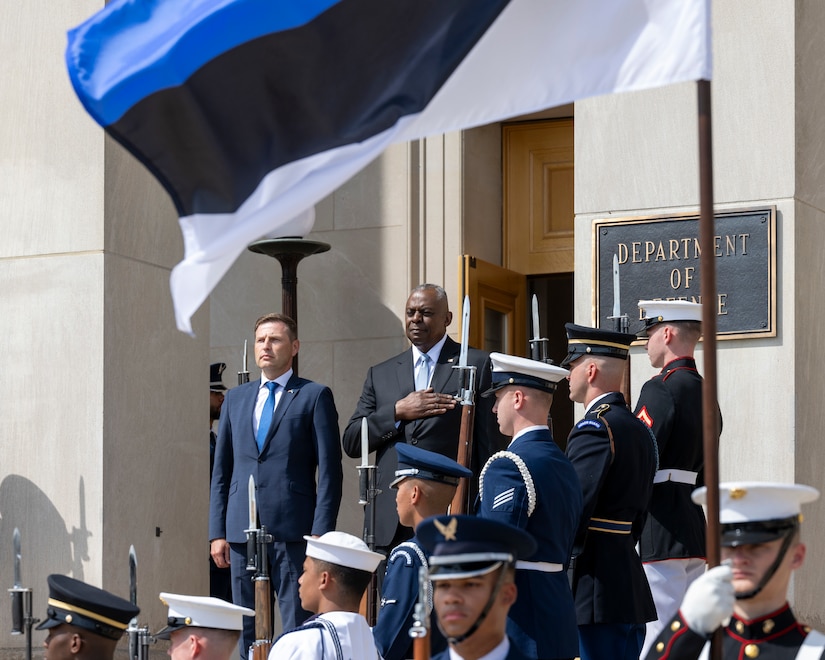Secretary of Defense Lloyd J. Austin III today hosted Estonian Defense Minister Hanno Pevkur in discussions at the Pentagon, just a week and a half after the conclusion of the NATO summit in Washington.
The two men discussed, among other things, strengthening NATO’s deterrence and defense, continued joint exercises between the two nations, U.S. rotational presence in Estonia and other Baltic states, increased defense production and the continued illegal presence of Russia in Ukraine.
“Putin’s war of choice continues to threaten our shared security,” Austin said. “The United States and Estonia, along with our allies and partners, continue to stand strong for a free and sovereign Ukraine. And you’ve shown outstanding support for Ukraine, including your security assistance contributions.”
Austin commended the minister for Estonia’s military modernization and its investment in new military capabilities, which he said are critical for deterring attacks and building readiness.
“I applaud Estonia’s pledge to invest more than 3% … of your GDP on your national defense,” he said. “That just underscores Estonia’s dedication to transatlantic security.”
The U.S. has some 600 troops in Estonia on a rotational basis, and Austin thanked Pevkur for supporting those troops.
“The United States remains committed to maintaining our persistent rotational force presence in the Baltics, and our rotation of U.S. forces through Estonia shows how serious we are about Estonia’s defense,” he said. “I’m also pleased that our troops in Estonia enjoy such a rich, multinational training environment. And our civil-military interaction teams have been working together to strengthen our people-to-people ties.”
Continued U.S. military presence in Europe and Baltic states, Pevkur said, also remains critical to deterring further Russian aggression.
“We are very, very grateful for this continued, persistent heel-to-toe U.S. presence in Estonia and in the other Baltic states,” Pevkur said. “I would like to take this occasion to thank all the U.S. servicemen and women who have rotated to Estonia over the past year and a half and also their families and close ones for the support.”
The Estonian minister also said that today’s security environment means that a 2% defense spending target for NATO allies is no longer enough, and he called for more.
“We, therefore, need to discuss and agree to higher spending targets, such as 2.5% or 3%,” Pevkur said. “And this could be a concrete deliverable for NATO’s 2025 summit in The Hague [Netherlands].”
Already, Estonia is spending 3% on defense, the Estonian defense minister said, but recent negotiations have resulted in a decision to spend even more.
“We go above 4% in 2026, maybe even 4.4% [or] 4.5%, depending on the economy,” he said. “But … we will invest a lot. And 40% of that money we will invest directly to ammunition and fires [and] the new capabilities. We are doing our share to keep the alliance safe.”
In the coming years, Pevkur said, NATO allies must focus on scaling up the delivery of military capabilities, such as air defense and fires, and must also increase defense industrial capacity.
Finally, Pevkur thanked Austin for his leadership on the combined effort to provide capabilities to Ukraine and for security cooperation in Estonia. He told Austin that Estonian President Alar Karis had agreed to award Austin with a national award, the Second Class of the Order of the Cross of Terra Mariana.
Pevkur said he bestowed the award on Austin following their discussions.









